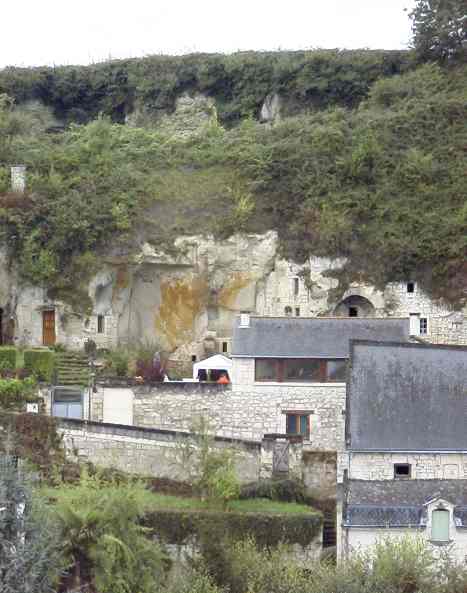
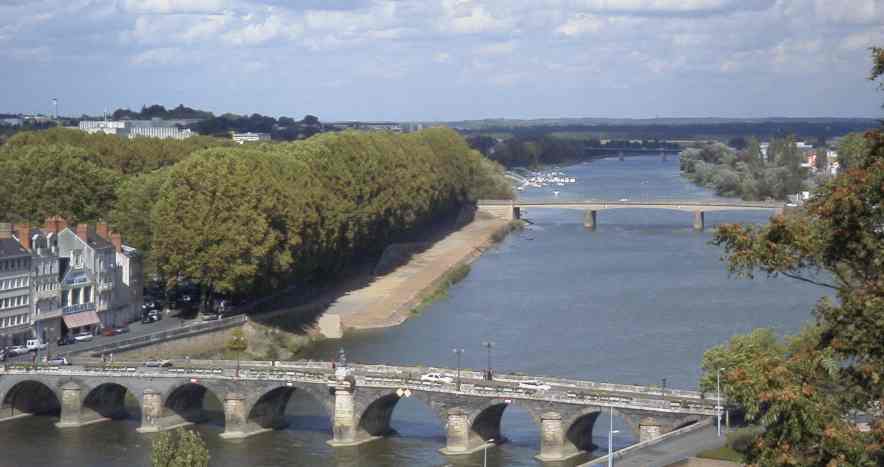 The town of Angers, looking down
from the castle rampart.
The town of Angers, looking down
from the castle rampart.
We spent a four day weekend (the last of September 1999) traipsing upstream on part of the Loire valley. Mostly we saw chateaux (11 of them) and only in the Anjou and Touraine areas (which for those of you who have been there know, it's a pretty small part of the Loire region. But we'll be back, hopefully several times.
You can do a lot in the Loire valley like taste and buy wines, relax, etc. We didn't. We madly dashed around looking at old buildings.
We took a lot of pictures which will take some time to load; while that's happening, let me give you a little background on the region, historically, and geologically since they have something to do with the chateaux we saw:
The Loire is a great place to live. Sunny (mostly, except towards the end of the trip, the rain was a bit unpleasant), fertile (we bought more bottles of wine than chateaux visited), and full of caves where cavemen could live (they came early), and some French still live in those caves today. (So do about 75% of the mushrooms grown for sale in France, but that's another story and trip). The picture below shows houses that are actually the fronts of caves cut into the soft white limestone called tufa (and pronounced like the soybean stuff we should all be eating more of).

The houses, like the caves that form their sides and roofs, are made of the soft stone deposits called tufa -- its whiteness is what gives the bridges and castles of this regions their beige look.
The river itself changed its mind over the eons, changing its direction from flowing Northward (from near the Mediterranien) to drain into the Seine to switching to a Westward flow at Orleans and draining into the Atlantic. (Obviously there's good reasons for this, but given the gravity of the matter, we won't go into them here). We started close to the Atlantic at Angers, and went upstream (eastward). This wasn't as hard as it sounds as we traveled by rent-a-car, our first time doing so on the Continent).
French history also took a turn-in-direction in this area in that the French developed a sense of a nation during the Hundred Years' War (1337-1453). An even greater influence on the Chateaux we saw was the Italian Renaissance influence which the French kings picked up after they quit fighting the English during the Hundred Years War and went Southward to fight Italians beginning in 1494. While they generally won those campaigns, the Italians captured the French hearts and their notion of what a chateaux was like became immensely corrupted by beauty and pleasure. Hence we see the Chateaux turn from forts into pleasure palaces.
But what were all these kings doing here anyway? Why weren't they in Paris? Here's where you stretch my knowledge of French history past its limits. Towards the end of the Hundred Years War, the English controlled most of France except for the Orleans area. Thanks to Joan of Arc, the French rallied and drove the English out and created the French nationalistic spirit still prevalent today. However, afterwards when the French kings had solidified their power beyond question (at least until the revolution), the kings could have moved back. Instead they stayed, moving from chateaux to chateaux (and taking the entire court with them like desert nomads). These chateaux were along the river, not because of the strategic defensive positions (which would no longer be needed, because the king's power is now unquestioned), but because the barges could move all of the kings stuff including tapestries, leather wall panels, illuminated books, paintings, sculpture, etc. One of the guides we overheard said the court would move every three months. I don't know if that's true or not, but the court did move often so the king could make his presence known among his subjects (and keep them from thinking they needed anyone else as king). Obviously if you're trying to assert your presence, it helps to have a lot of people, gold, etc. in your retinue.
This went on for 170 years or so until the religious wars towards the end of the sixteenth century and the often reoccurring plague ended it all and the kings moved back North to the Paris area palaces.
By now, you think that I may go on for 170 years, but hopefully some of the pictures have loaded and we can show you where we've been.
We started on the western side of the valley at Angers, which, as you can see from the picture below, was a true fort which sits on the Maine river which drains southward into the Loire. Long before there were French, the Angerians (who were Celts) were resisting Romans.
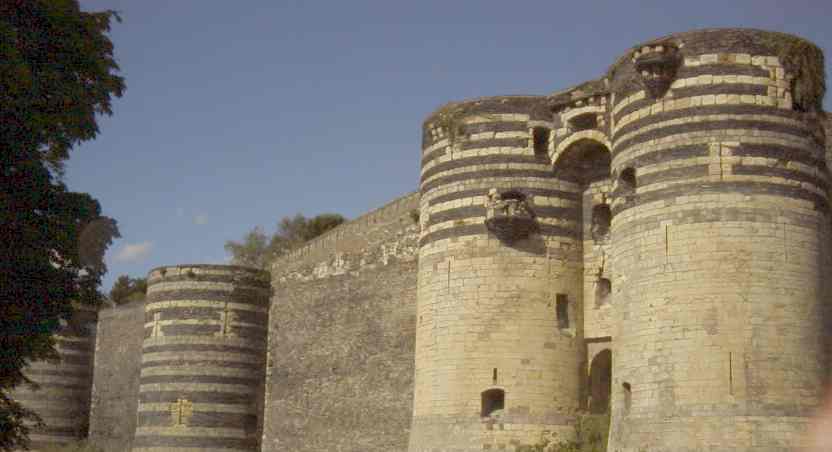
These towers (17 in all) were built about 750 years ago and are good examples of feudal architecture (as opposed to my house in Houston which was an example of futile architecture.) These towers are now 130-165 feet high but were taller Before gunpowder was invented, height was a great advantage because you could dump all sorts of stuff on those trying to penetrate your fort. After gunpowder and the invention of artillery that could blast through castle walls, this was no longer the case so many of these forts were actually cut down in size (all the better to aim accurately at the attackers). Angers, however, was shortened by order of the king (Henry III) who wanted it totally destroyed. The governor removed the pepper pot roofs and shortened the towers, but took his time before destroying the fort. Fortunately the king died before the destruction could be carried out.
The fort has two significant gardens. The first you see upon approaching the fort, as the moats have been converted to geometric flower beds.
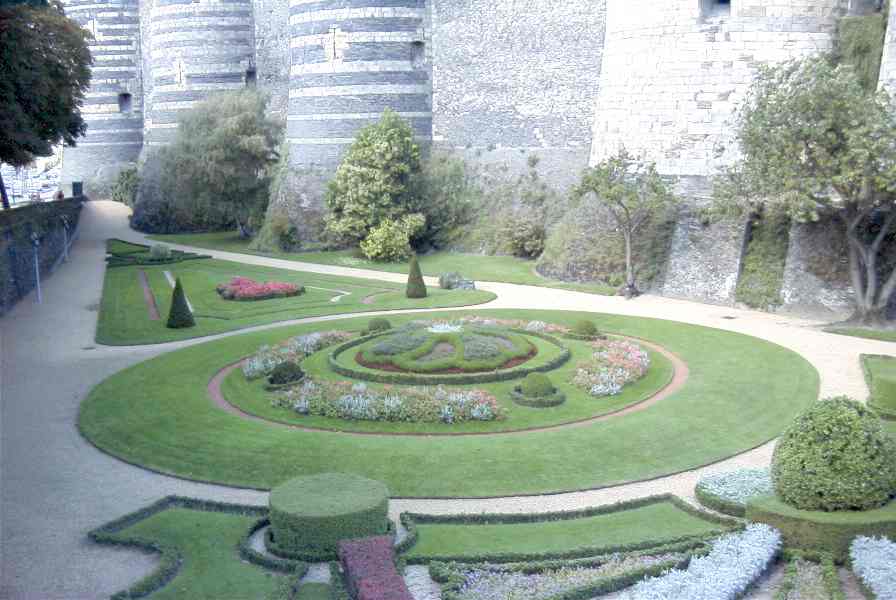
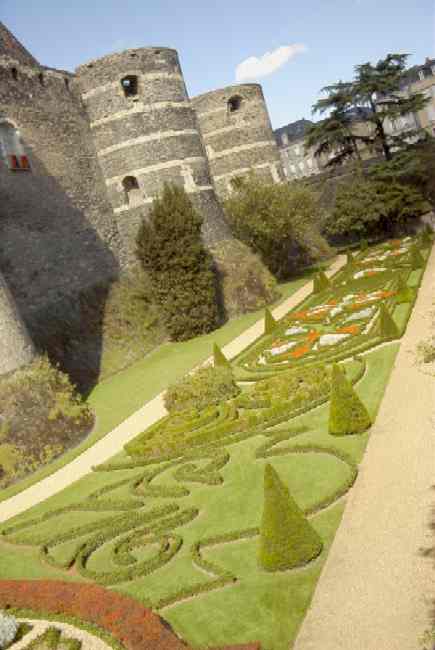
And the great courtyard holds another garden:
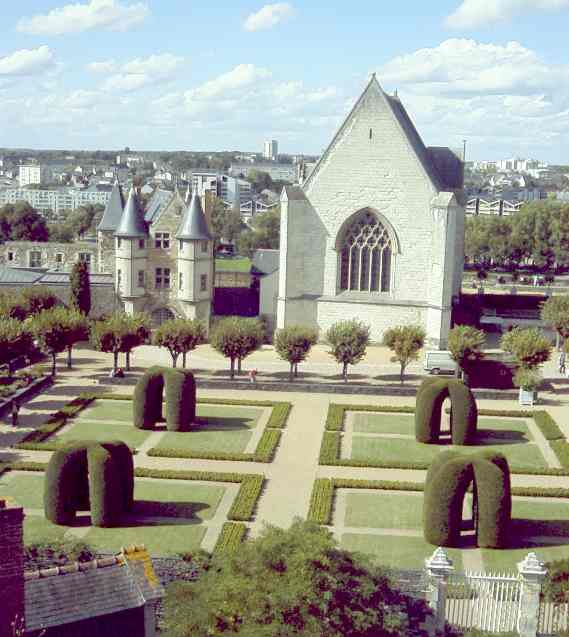
Like a lot of Loire places that are very impressive from the outside, the Anger's chateau has not much going for it inside with one huge exception. This is because most of the French palaces lost their contents during the revolution.
The exception for Angers is the famous tapestries of St. John's Apocalypse created around 1373. This was originally about 150 yards long. From about 1500 to 1848 these tapestries disappeared. They were in pretty bad shape (with areas completely missing) but have been restored.
They are now in their own building with very dim light (hence the lousy quality of the picture below). These are really quite spectacular and intricate (including looking the same on both sides).
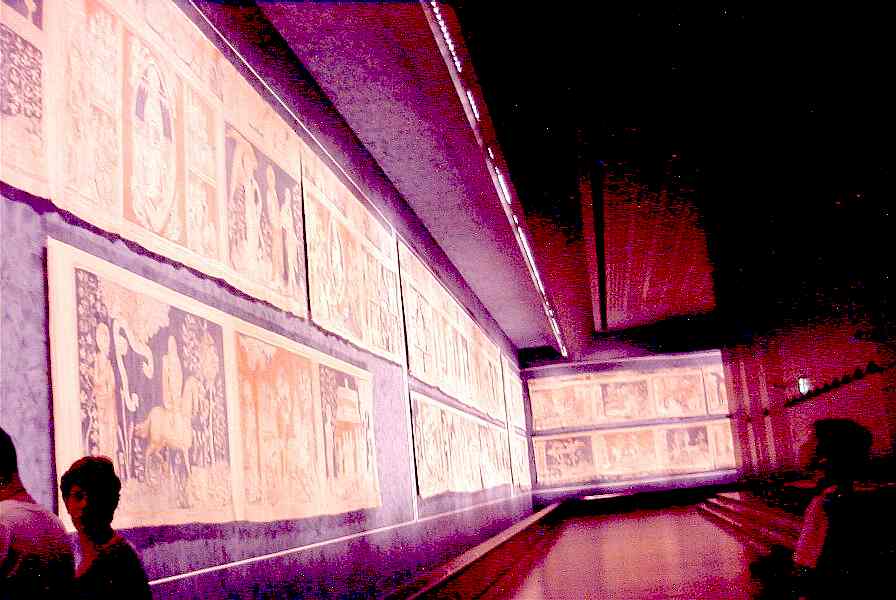
That's Pietrina at the right. She'll come out of the shadows later.
Next we visited Cathédrale St-Maurice, about a block away. Please click here to join us.
Where do you want to go today? Here's a few choices:
